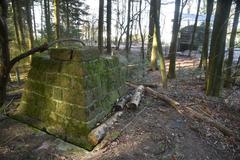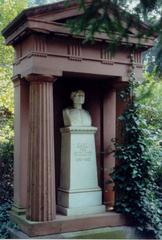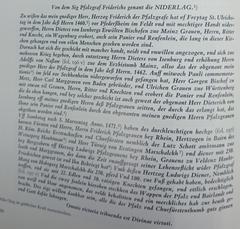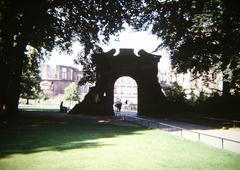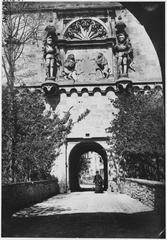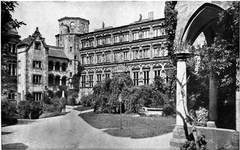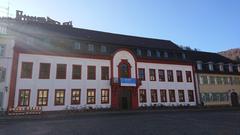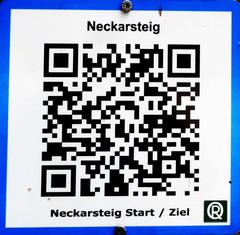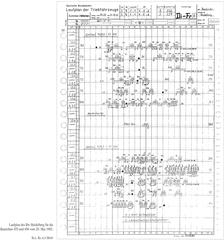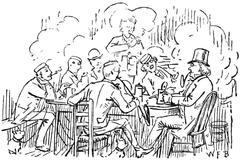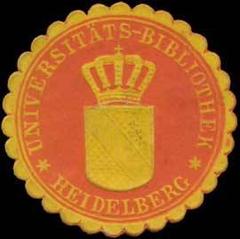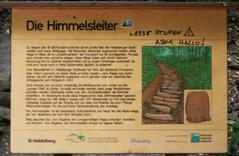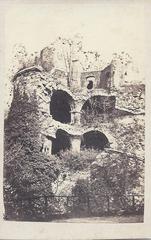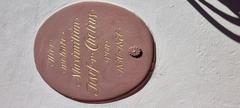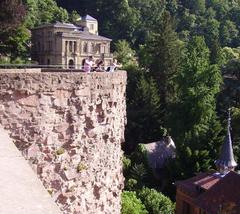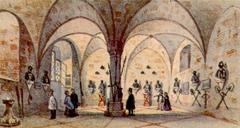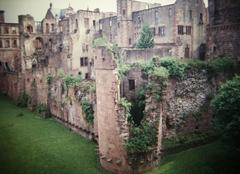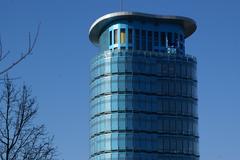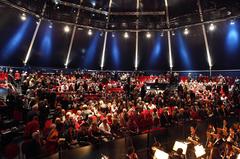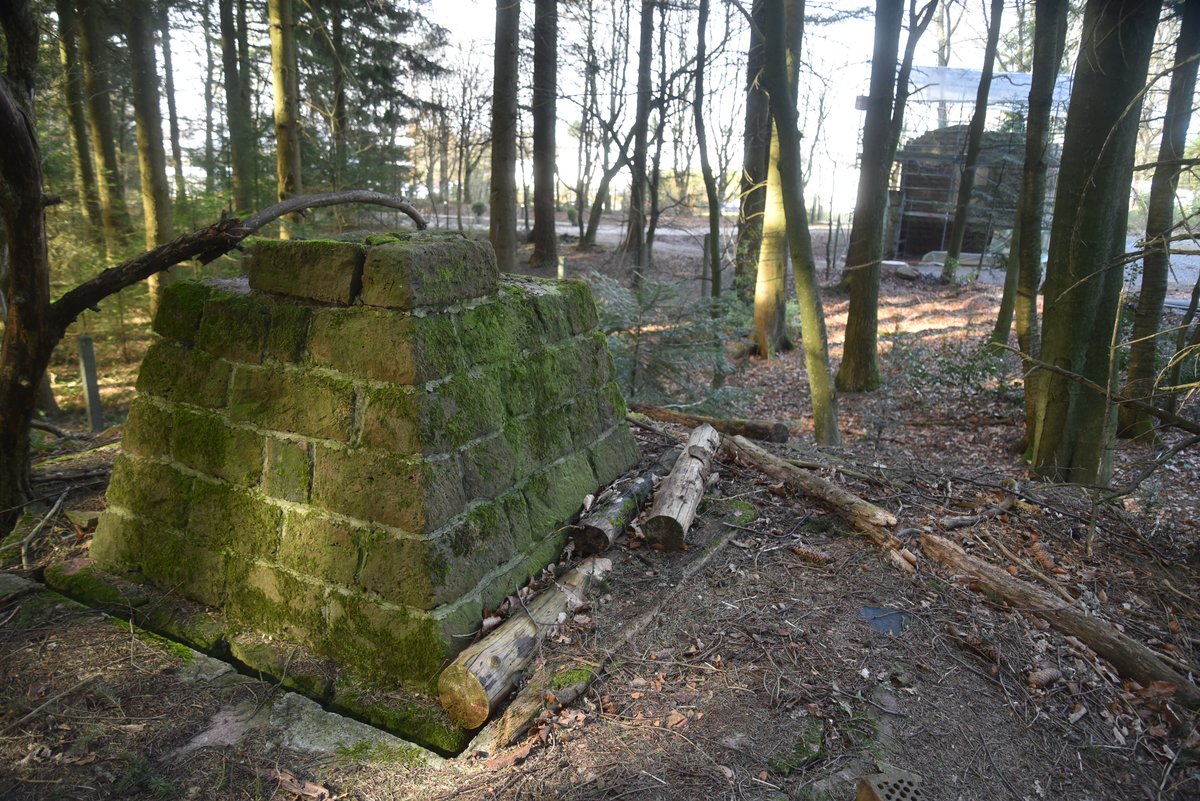
Landessternwarte Heidelberg-Königstuhl: Visiting Hours, Tickets, and Historical Significance
Date: 14/06/2025
Introduction
Perched atop the scenic Königstuhl hill, the Landessternwarte Heidelberg-Königstuhl (LSW) is an iconic institution blending over a century of astronomical discovery with striking architectural heritage. Established in 1898, the observatory has played a pivotal role in advancing astrophysics, from early asteroid discoveries to cutting-edge exoplanet research. Today, LSW remains a center for both scientific innovation and public engagement, welcoming visitors to explore its historic grounds, legendary telescopes, and panoramic views over Heidelberg and the Neckar valley.
This guide provides detailed information on visiting hours, ticketing, guided tours, accessibility, travel tips, and highlights from the observatory’s rich scientific legacy. Whether you are an astronomy enthusiast, a history lover, or a traveler seeking Heidelberg’s cultural treasures, this article will help you plan a memorable visit.
For the latest updates, tour bookings, and interactive resources, visit the official Landessternwarte Heidelberg-Königstuhl website and the Haus der Astronomie.
Table of Contents
- Introduction
- Historical Overview and Scientific Achievements
- Visitor Information: Hours, Tickets, and Access
- Guided Tours and On-site Experience
- Practical Tips and Accessibility
- Nearby Attractions and Amenities
- Frequently Asked Questions (FAQ)
- Conclusion and Call to Action
- References
Historical Overview and Scientific Achievements
Early Astronomy in Heidelberg
Astronomical study in Heidelberg began in the 17th century, with Jakob Christmann pioneering telescopic observations. The region’s importance grew in the 18th century under Christian Mayer, founder of the Mannheim Observatory, who made significant advances in double star studies.
Establishment of Landessternwarte
By the late 19th century, increasing pollution in Mannheim led to the relocation of astronomical instruments to Königstuhl hill, 570 meters above Heidelberg. The observatory officially opened on June 20, 1898, as the “Großherzogliche Bergsternwarte,” under Grand Duke Friedrich I of Baden. Max Wolf, noted for his astrophotographic innovations, became its first director, leading to major discoveries such as the photographic detection of comets and nebulae.
Key Scientific Milestones
- Asteroid Discovery: Over 800 minor planets were discovered here, including the first Trojan asteroid, Achilles.
- Halley’s Comet: Rediscovered at LSW in 1909.
- Nebulae Cataloguing: Nearly 6,000 gaseous nebulae identified.
- Instrumentation: Historic telescopes include the Bruce Astrograph, Kann Refractor, and Waltz Reflector, which remain operational for research and public outreach.
Modern Research and International Collaboration
Today, LSW is part of the Center for Astronomy at the University of Heidelberg. Research highlights include:
- Exoplanet Studies: The CARMENES project has transformed our understanding of planetary systems around M-dwarfs (CARMENES project).
- Galactic Archaeology: Teams study ancient stars to unlock the Milky Way’s origins (Galactic Archaeology).
- Stellar Evolution: Research into hot compact stars and white dwarfs (Hot Compact Stars research).
- International Missions: Contribution to the Gaia mission, mapping the Milky Way with unprecedented detail (Gaia at Heidelberg).
Visitor Information: Hours, Tickets, and Access
Location
- Address: Königstuhl 12, 69117 Heidelberg, Germany (LSW Official)
- Setting: The observatory is situated on Königstuhl summit, offering both prime observation conditions and panoramic city views (Heidelberg Guide).
Getting There
- By Funicular: The historic Heidelberg Bergbahn runs from Kornmarkt (Old Town) to Königstuhl summit, stopping near the observatory (Bergbahn).
- By Bus: Bus 30 from Universitätsplatz or Bus 39 from Bismarckplatz. After 20:00, a Ruftaxi service is available (LSW Directions).
- By Car: Drive up Königstuhlstraße; parking is limited but usually sufficient.
- By Foot: Hike up scenic trails or the Himmelsleiter staircase for a challenging ascent (Heidelberg Guide).
Visiting Hours
- Guided Tours: Monday to Friday, with start times between 10:00 and 16:00 (MPIA). Evening and weekend tours are occasionally available for small groups.
Tickets and Booking
- Admission: Access is by pre-arranged guided tour only; no walk-in visits.
- Fee: €6.00 per person, invoiced after the tour (MPIA).
- Booking: Advance reservation required via the Haus der Astronomie or by phone (Monday to Friday, 9:00–13:00).
Guided Tours and On-site Experience
Tour Content
- Introduction: Begins in the Klaus Tschira Auditorium with an overview of LSW’s history and research.
- Planetarium Show: Digital presentations on current space missions and astronomical phenomena.
- Historic Telescopes: Visits to the Bruce Astrograph, Kann Refractor, and Waltz Telescope.
- Research Exhibits: Displays on recent discoveries, instrumentation, and international collaborations.
- Languages: Tours available in German and English.
- Duration: Approximately 1 hour 45 minutes.
- Group Size: 12–45 participants.
Special Events
- Occasional public lectures, observation nights, and thematic events are held throughout the year. Check the Haus der Astronomie for details.
Practical Tips and Accessibility
- Accessibility: Some areas are wheelchair accessible, but historic buildings may have steps or uneven surfaces (Heidelberg University).
- Facilities: Restrooms available; no café on-site, but refreshments are nearby at the Königstuhl summit.
- Weather: Bring a jacket and sturdy shoes; summit conditions are cooler and may be windy.
- Language: Tours are commonly available in English and German (Galavanting the Globe).
- Photography: Allowed in most areas; flash and tripods may be restricted.
- Children: Educational for school-age children; the Planetenweg trail is family-friendly.
Nearby Attractions and Amenities
- Heidelberg Castle: Accessible by the same funicular, this iconic landmark is ideal for combining visits.
- Philosophenweg and Old Town: Scenic walks and historical exploration (My Global Viewpoint).
- Haus der Astronomie: Adjacent center offering exhibitions and workshops.
- Hiking & Nature: Trails and panoramic viewpoints abound around Königstuhl.
Frequently Asked Questions (FAQ)
Q: Can I visit without booking a tour?
A: No, all visits must be arranged in advance via guided tours.
Q: How do I book tickets?
A: Reserve online through the Haus der Astronomie; tickets are not sold on-site.
Q: What are the tour hours?
A: Monday to Friday, 10:00–16:00, with occasional evening and weekend options.
Q: Is the observatory accessible for wheelchair users?
A: Some areas are accessible; contact the observatory ahead for details.
Q: Are there programs for children or schools?
A: Yes, special group tours and educational programs are available (MPIA).
Q: Where can I find up-to-date visitor information?
A: Visit the official LSW website and the Haus der Astronomie site.
Conclusion and Call to Action
The Landessternwarte Heidelberg-Königstuhl stands as both a monument to scientific achievement and an inspiring destination for visitors of all backgrounds. Advance booking is required for all visits, ensuring an immersive and informative experience amid historic instruments and state-of-the-art research. Combine your tour with exploration of Heidelberg’s castle, Old Town, and the stunning natural surroundings of Königstuhl for an unforgettable day.
Ready to begin your astronomical journey? Reserve your tour today via the Haus der Astronomie, and enhance your visit with the Audiala app for real-time tips and interactive guides. Stay connected on social media for event updates, and explore related articles for more on Heidelberg’s history and culture.
References
- Landessternwarte Heidelberg-Königstuhl official
- Haus der Astronomie - Tours
- MPIA Tour Information
- Heidelberg Guide – Sternwarte
- Heidelberg Guide – Königstuhl
- Heidelberger Bergbahn
- Galavanting the Globe – Heidelberg
- My Global Viewpoint – Heidelberg
- TravelSetu – Königstuhl
- Heidelberg University – Landessternwarte
- LSW Directions
- CARMENES Project
- Galactic Archaeology
- Hot Compact Stars Research
- Gaia at Heidelberg
